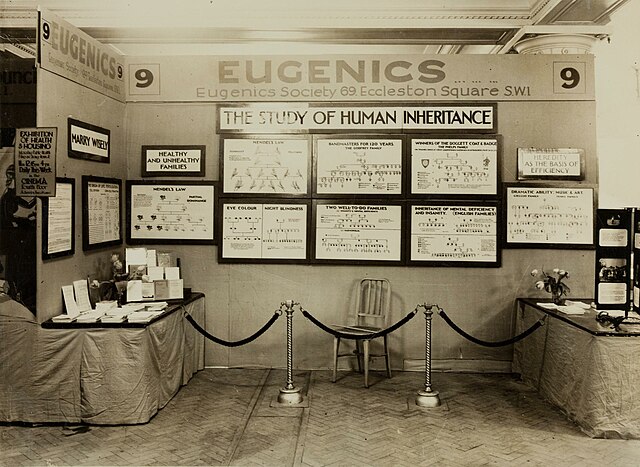The history of eugenics is the study of development and advocacy of ideas related to eugenics around the world. Early eugenic ideas were discussed in Ancient Greece and Rome. The height of the modern eugenics movement came in the late 19th and early 20th centuries.
Sir Francis Galton initially developed the ideas of eugenics using social statistics.
A pedigree chart from The Kallikak Family meant to show how one illicit tryst could lead to an entire generation of imbeciles.
Anthropometry demonstrated in an exhibit from a 1921 eugenics conference.
Three generations of racial whitening in a family of Australian Aborigines. From right to left: a half-caste grandmother with her quadroon daughter and octoroon grandson. Image from a 1947 book by eugenicist A. O. Neville.
Eugenics is a set of beliefs and practices that aim to improve the genetic quality of a human population. Historically, eugenicists have attempted to alter human gene pools by excluding people and groups judged to be inferior or promoting those judged to be superior. In recent years, the term has seen a revival in bioethical discussions on the usage of new technologies such as CRISPR and genetic screening, with heated debate around whether these technologies should be considered eugenics or not.
A 1930s exhibit by the Eugenics Society. Two of the signs read "Healthy and Unhealthy Families" and "Heredity as the Basis of Efficiency".
Francis Galton, an early eugenicist, coined the term itself.[need quotation to verify]
G. K. Chesterton, an opponent of eugenics, photographed by Ernest Herbert Mills in 1909
Schloss Hartheim, a former center for Nazi Germany's Aktion T4 campaign







